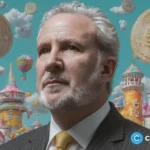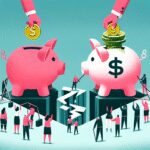Hong Kong-based Animoca Brands aims to one day obtain a stablecoin issuing license through its joint venture with Standard Chartered Bank and Hong Kong Telecom. The move comes ahead of the region’s Stablecoin Ordinance legalization.
In an exclusive interview with China Business Network, Group President of Animoca Brands Evan Auyang stated that the web3 has entered into a joint venture with Hong Kong’s Standard Chartered Bank and Hong Kong Telecom in anticipation for the region’s new Stablecoin Ordinance coming into effect.
According to Auyang, the purpose of the joint venture is to open the door for Animoca Brands to pursue a stablecoin issuer license and set up an established web3-based ecosystem for users to utilize its native stablecoin.
“We currently have a joint venture company through which we intend to apply for a license to issue stablecoins . The specific details will be announced at a later time,” said Auyang in his statement.
The firm aims to mobilize customers into web3 through application scenarios at the same time. In order to establish an ecosystem that can drive customers to shift from web2 to web3 would require collaboration with leading companies in different industries, such as Standard Chartered and Telecom.
“Our group is responsible for the development of native Web3 application scenarios, Standard Chartered Bank is responsible for driving bank customer resources, and Hong Kong Telecom focuses on reaching retail customers,” explained Auyang.
Animoca Brands plans to use HKD-pegged stablecoin for three purposes: to carry out transactions within the firm’s gaming and NFT ecosystems, cross-border trade settlements and to popularize HKD-backed stablecoins on an international scale.
After the United States passed the GENIUS Act with the purpose of advancing its stablecoin market, Hong Kong industry players like Animoca Brands and JD.com have been preparing themselves for the issuance of a Hong Kong dollar-pegged stablecoin.
The move is aimed at carving a place in the market for Hong Kong dollar-backed stablecoins in an effort to combat U.S. stablecoin dominance.
On June 6, the Hong Kong Special Administrative Region Government announced that it will start implementing its stablecoin regulation, the Stablecoin Ordinance in August 2025. The new law would allow for companies to register for a license to issued stablecoins pegged to the Hong Kong dollar.









